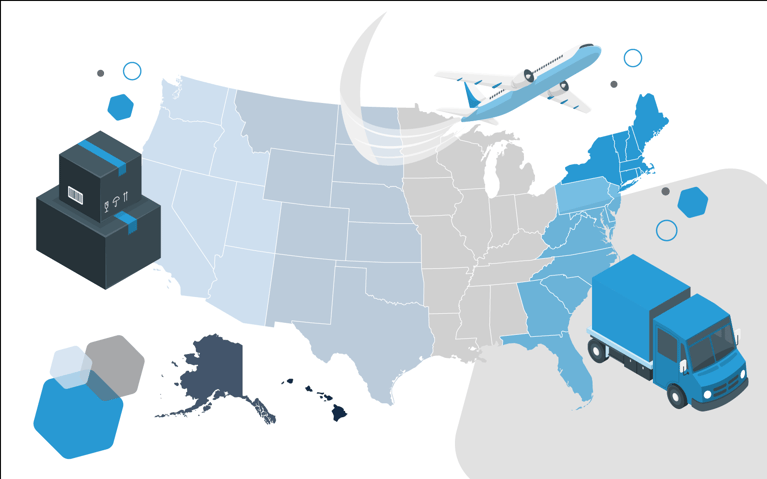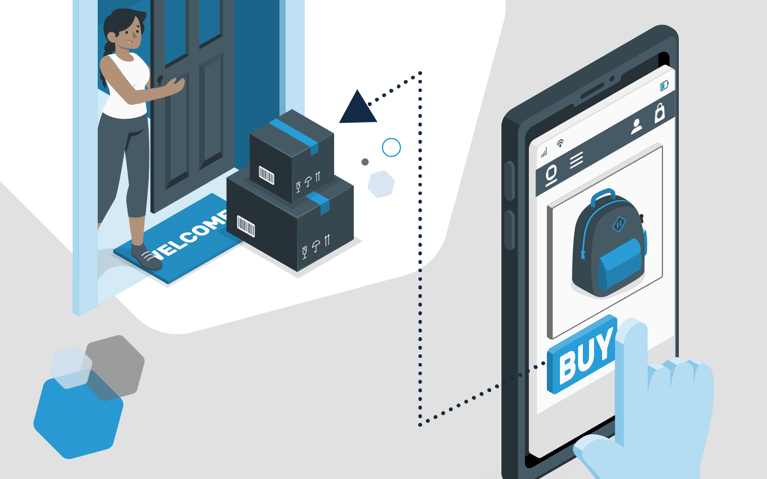Somewhere out there, someone tracks the status of their eagerly anticipated package. With the rising expectations for swift deliveries, propelled by shipping giants offering one and two-day services, businesses are in a constant quest for operational efficiency.
Enter cross-docking, a favored method for swiftly moving inventory, eliminating the need for it to linger in warehouses. This approach is a game-changer in reducing shipping times. If you're curious about cross-docking, what it entails, how it can enhance your ecommerce operations and the advantages it brings, you’re in the right place. Keep reading to delve into the world of cross-docking, discover its perks and gain insights into its operational mechanics.
What is cross-docking?
Cross-docking is a logistics strategy that minimizes the time a product spends in a warehouse. Instead of storing products for an extended period, they are unloaded from an inbound vehicle, sorted and immediately loaded onto an outbound vehicle. This outbound truck typically transports the products directly to its destination. In other words, cross-docking skips the part of the supply chain where inventory sits in a warehouse.
Benefits of cross-docking ecommerce:
1. Reducing storage and handling costs
Warehousing costs can eat up a significant chunk of an ecommerce business's budget. Cross-docking helps cut those costs by reducing the need for large storage spaces and long-term storage solutions. You don't have to worry about maintaining a massive warehouse, paying for extensive storage facilities or hiring extra personnel to manage the storage.
2. Improving order fulfillment speed
Speed is everything when it comes to ecommerce. Customers want their orders yesterday and cross-docking can help you get closer to that goal. By swiftly moving products from suppliers to customers, cross-docking dramatically shortens the delivery time. Everyone loves fast and easy shipping, and your customers will thank you for it.
3. Inventory management and forecasting
Cross-docking allows businesses to have a more accurate and real-time view of their stock. With a shorter time spent in the warehouse, you can better monitor inventory levels and reduce the risk of overstocking or understocking. This forecasting ability also allows your brand to respond quickly to changing customer demands.
How cross-docking works
In the dynamic world of ecommerce, where businesses offer a diverse range of products from various suppliers, the logistics behind managing incoming shipments play a crucial role. Upon arrival, these shipments undergo a streamlined sorting process to efficiently handle the assortment of items.
One innovative approach that has gained traction is cross-docking. This method involves the rapid categorization of items based on their intended destinations. Instead of making a prolonged stopover in a storage facility, the products are swiftly loaded onto outbound vehicles for direct delivery to customers. The essence of cross-docking lies in its emphasis on immediacy – it's all about getting products to their respective destinations promptly.
This approach not only minimizes the need for extensive warehousing but also aligns with the overarching goal of ensuring swift and efficient delivery to meet customer expectations.
Types of cross-docking
There are different approaches to this logistics strategy and they can be tailored to your ecommerce business's specific needs.
Retail cross-docking
Retail cross-docking is all about delivering products directly to retail stores. It's commonly used in the fashion industry, where the goal is to get the latest styles onto store shelves as quickly as possible. It minimizes storage time and gets new arrivals to customers fast.
Opportunistic cross-docking
Opportunistic cross-docking is seen as a more flexible approach to logistics. It involves taking advantage of opportunities as they arise. In planned cross-docking, expected receipts are aligned with a demand source, while opportunistic cross-docking matches received supply to customer demands.
Distributor cross-docking
In distributor cross-docking, products are received from various suppliers and then consolidated for delivery to customers. This approach is commonly used by businesses that have a wide range of products from multiple sources.
Implementing cross-docking in ecommerce
Here's a basic roadmap to get you started with implementing cross-docking for your company.
Analyze your inventory
Take a look at your products and identify which ones are suitable for cross-docking. Look for items with consistent demand, as they are the ideal candidates for this strategy.
Collaborate with suppliers
You'll need to work closely with your suppliers to coordinate shipments and ensure that products arrive on time. Effective communication and planning are key.
Efficient sorting and loading
Create a streamlined process for sorting and loading products. Invest in the right equipment and tools to make this step more efficient.
Inventory monitoring
Implement an inventory management system that allows you to monitor your stock in real-time. This is essential for monitoring the status of your cross-docking strategy.
Continuous improvement
Like any good logistics strategy, you’ll need to continually evaluate its progress. Make adjustments to your cross-docking policies, as needed, to optimize over time.
Future trends in ecommerce fulfillment
The landscape of fulfilling customer orders is constantly evolving to meet the ever-increasing demand for faster shipping. Technological advancements are playing a crucial role in this evolution.
A significant trend in this space is the integration of automation and robotics within warehouses and distribution centers. These technological marvels are empowering ecommerce companies to explore and offer same-day, and even instant, delivery options. The race for speed is compelling the ecommerce sector to embrace automation and leverage artificial intelligence in their operations.
In parallel, with the rising importance of environmental considerations, ecommerce businesses are actively seeking ways to make their fulfillment processes more eco-friendly. This involves adopting practices such as energy-efficient warehouses, sustainable packaging, and the use of electric delivery vehicles. By incorporating sustainable strategies, brands are not only meeting the demands of conscious consumers, but also contributing to a greener and more responsible business environment.
Investing in cross-docking
Still curious if cross-docking is right for your ecommerce brand? Maybe even more so now?
Well, it really boils down to your unique business requirements. This approach tends to shine brightest for businesses juggling a high volume of products, proving especially advantageous for ecommerce companies, retail chains and distributors handling fast-moving goods. If you find yourself in a fiercely competitive market where customers demand swift deliveries and minimal product handling, cross-docking could be a game-changing strategy to explore.
Delivering what your customers crave at lightning speed not only satisfies their expectations but also increases the likelihood of them returning for more.
Subscribe to our emails for the latest industry insights!
By entering your email, you agree to receive marketing emails from Cart.com






